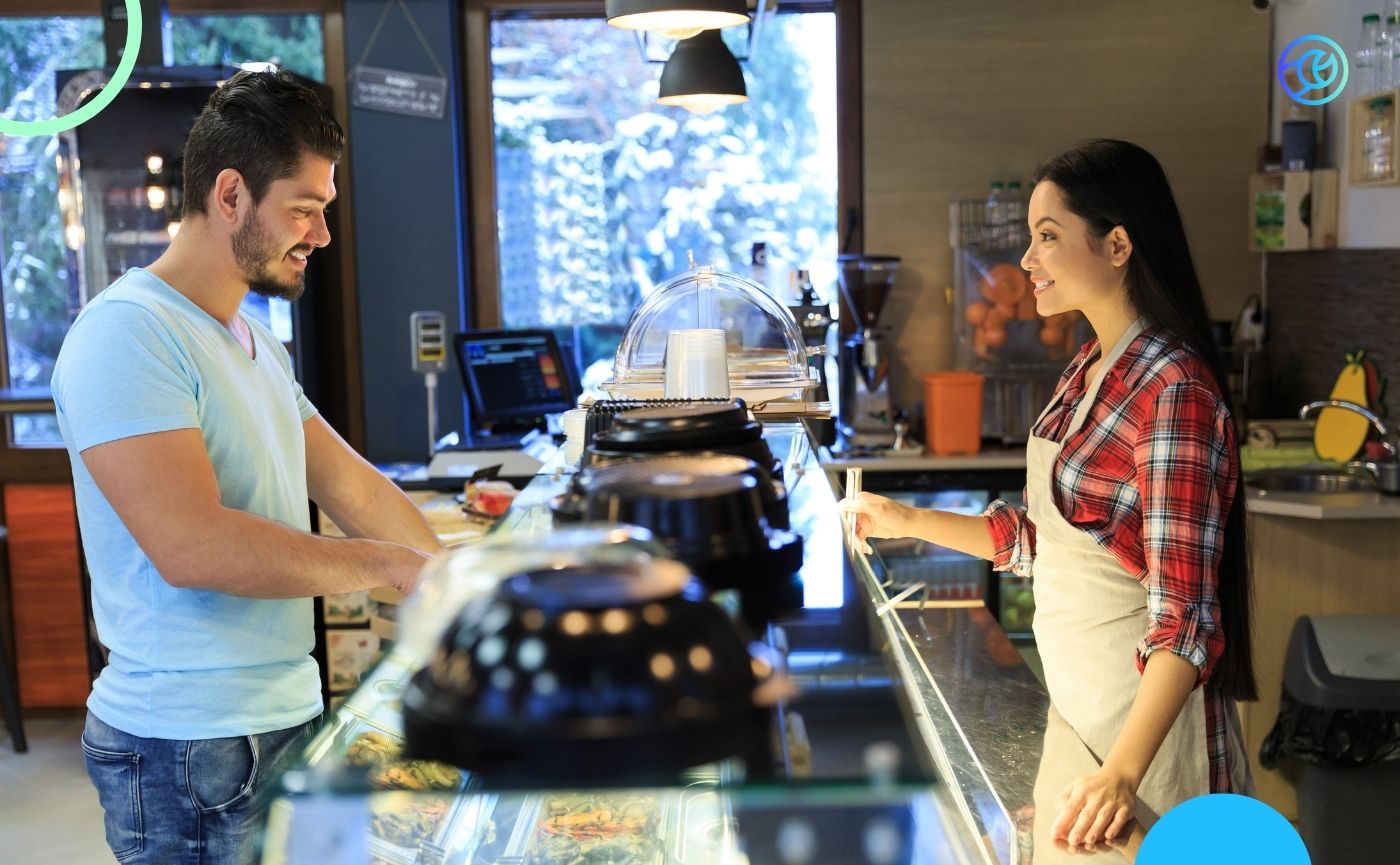How Franchises Can Keep Local Authenticity as Meta Automation Expands
AI can scale creative without erasing what makes each location human.
When Meta promised advertisers “cheaper results” through full automation, the announcement sounded like progress. But by the time marketers read the fine print in eMarketer’s October 2025 report, optimism had turned uneasy. Automation was delivering lower costs while also stripping away visibility, control, and the creative nuance that connects brands to real people.
For national franchise systems, this is more than an algorithmic annoyance. It’s a pivotal brand identity challenge.
The Hidden Cost of Invisible Automation
Automation was supposed to free marketers, not blindfold them. Franchise brands that once balanced national consistency with local authenticity now find themselves navigating Meta’s evolving automation landscape while balancing efficiency with authenticity.
When every local ad starts to look the same, the brand story collapses into sameness. The audience sees a corporate template where they expected a neighborhood voice.
Meta’s systems optimize for efficiency. Franchises need to optimize for belonging.
Scale Without Sameness
Tiger Pistol’s 2026 Franchise Local Advertising Guide describes the new frontier: AI that scales creative while preserving local DNA.
Instead of one generic LTO ad from corporate, AI automatically adapts brand-approved templates into hundreds of locally relevant variations, with each featuring a neighborhood store, a real staff photo, or a community-specific offer.
AI has erased the trade-off between control and speed. Franchise marketers can now achieve compliance and creativity simultaneously.
That’s how automation becomes a creative amplifier instead of a creative filter.
Guardrails That Empower, Not Restrict
The hesitation around AI adoption often stems from the assumption that it will override brand standards. But intelligent systems don’t replace governance; they codify it.
Tiger Pistol’s approach builds creative guardrails that lock in logos, color palettes, and approved copy while leaving space for local adaptation. Franchise marketers define the boundaries; AI fills in the context.
In practice, this turns brand compliance from a bottleneck into a built-in feature. Every ad remains consistent, compliant, and unmistakably local.
Visibility Restores Trust
Transparency isn’t only for consumers, it’s for franchisees, too.
The same eMarketer report noted that marketers are seeking greater visibility into how automation makes decisions and where budgets go. Within a franchise network, that desire is magnified. When corporate and local teams share real-time dashboards, performance stops feeling abstract. Franchisees see what their contributions achieve; corporate sees which local strategies outperform.
Transparency transforms skepticism into advocacy.
Efficiency That Strengthens Relationships
Meta’s automation focuses on streamlining human effort. Franchise automation should focus on redeploying it.
By automating campaign setup, approval, and deployment, corporate teams reclaim time for strategy and storytelling. Local operators reclaim time for customer engagement. The result isn’t fewer people in the process. It’s more people doing work that matters.
Automation should multiply relationships, not reduce them.
Meta may automate reach, but only brands that automate relevance will endure. For franchise marketers, authenticity isn’t a luxury. It’s the most powerful advantage still left to scale.
The Way Forward
Franchise systems live in two worlds: national control and local expression. Meta’s automation risks collapsing that tension into a one-size-fits-all pipeline.
Tiger Pistol’s model shows another path: build AI that amplifies the brand’s human texture at scale. Use automation to handle repetition, not representation. Equip local teams to be creative ambassadors, not passive recipients.
When every franchisee can see their story reflected in the brand’s ads, participation follows naturally. And when participation rises, performance follows.
Discover how Tiger Pistol can power your local advertising success.
Key Takeaways
- The Issue: Meta’s full-automation strategy is reducing visibility and creative differentiation across paid social.
- Franchise Risk: Generic automation flattens local authenticity and weakens franchisee engagement.
- Solution Framework: Tiger Pistol’s localized AI creative automation merges control, compliance, and community relevance.
- Transparency: Shared dashboards rebuild trust between corporate and local teams.
- Outcome: Faster creative cycles, stronger franchisee participation, and ads that look—and feel—local.
FAQs
1. Why does Meta’s expanding automation matter for franchise marketers?
Meta’s automation concentrates more decisions inside the platform, from targeting to delivery. Franchise marketers feel this shift in two places: how clearly they can see what drives performance, and how easily they can protect both brand consistency and local flavor across locations. The stakes rise for every system that values local relevance.
2. How can franchises scale creative while keeping each location authentic?
Franchises pair AI with brand-approved templates. Corporate teams define the core structure, voice, and visuals. AI then adapts those templates into localized ads that feature real stores, staff, and offers. This approach delivers hundreds of variations that all feel connected to the same brand story and still reflect each neighborhood.
3. What are creative guardrails, and how do they help?
Creative guardrails act as a blueprint for safe flexibility. Elements such as logos, colors, and key phrases stay fixed, while fields like store name, imagery, and promotion details remain flexible. Guardrails give AI a clear lane to follow, so every ad stays compliant, recognizable, and relevant to its local audience.
4. How does shared visibility improve franchisee confidence in automation?
Shared dashboards give corporate and franchisees a common view of performance. Local owners see how their budget and participation contribute to outcomes, and corporate teams see which local tactics excel. This visibility turns automation into a shared system of learning and often encourages greater buy-in from local operators.
5. How can automation strengthen relationships across a franchise network?
Automation takes on repetitive work such as campaign setup, approvals, and deployment. Corporate teams gain more time for strategy, creative direction, and testing. Local teams gain more time for customers and community engagement. Human effort shifts toward higher-value interactions, so technology supports stronger relationships rather than replacing them.
Related Posts
Franchisee Engagement: Empowering Franchisees to Thrive in Local Marketing
Franchisees are highly skilled at managing their businesses, but many find themselves struggling when it comes to marketing. According to the IFA report, 57% of franchisees are single-unit owners, many of whom lack the time and digital marketing expertise necessary to run effective local advertising campaigns. These business owners are focused on operations,
TikTok vs. Instagram Reels: A Winning Strategy for the Greater Cleveland Food Bank
In the bustling heart of Cleveland, the Greater Cleveland Food Bank (GCFB) provides meals to families and individuals in need. One in seven of the area’s residents struggles with food insecurity. GCFB’s mission was clear: encourage monetary donations during checkout at participating local grocery stores. To tackle this, they decided to tap into the power [&
How Beauty and Wellness Brands Outperform Facebook Benchmarks with Local Advertising
Beauty and wellness thrive on personal connections and visual storytelling. However, many national campaigns fail to capture the localized nuances that drive engagement and sales. For franchises and multi-location Beauty and wellness businesses, this gap can mean missed opportunities for deeper customer connections and higher conversion rates. Tiger Pistol̵
Why Local Is the Strategy QSR Brands Can’t Afford to Ignore
Margins are shrinking. Competition is multiplying. And nearly 7 in 10 franchisees now name inflation and rising costs as their top challenge. But as operating expenses climb, diner behavior is pointing marketers to a clear path forward. Customers are still spending. They’re just spending differently. Diners Are Choosing Value, and They’re Finding It Online





